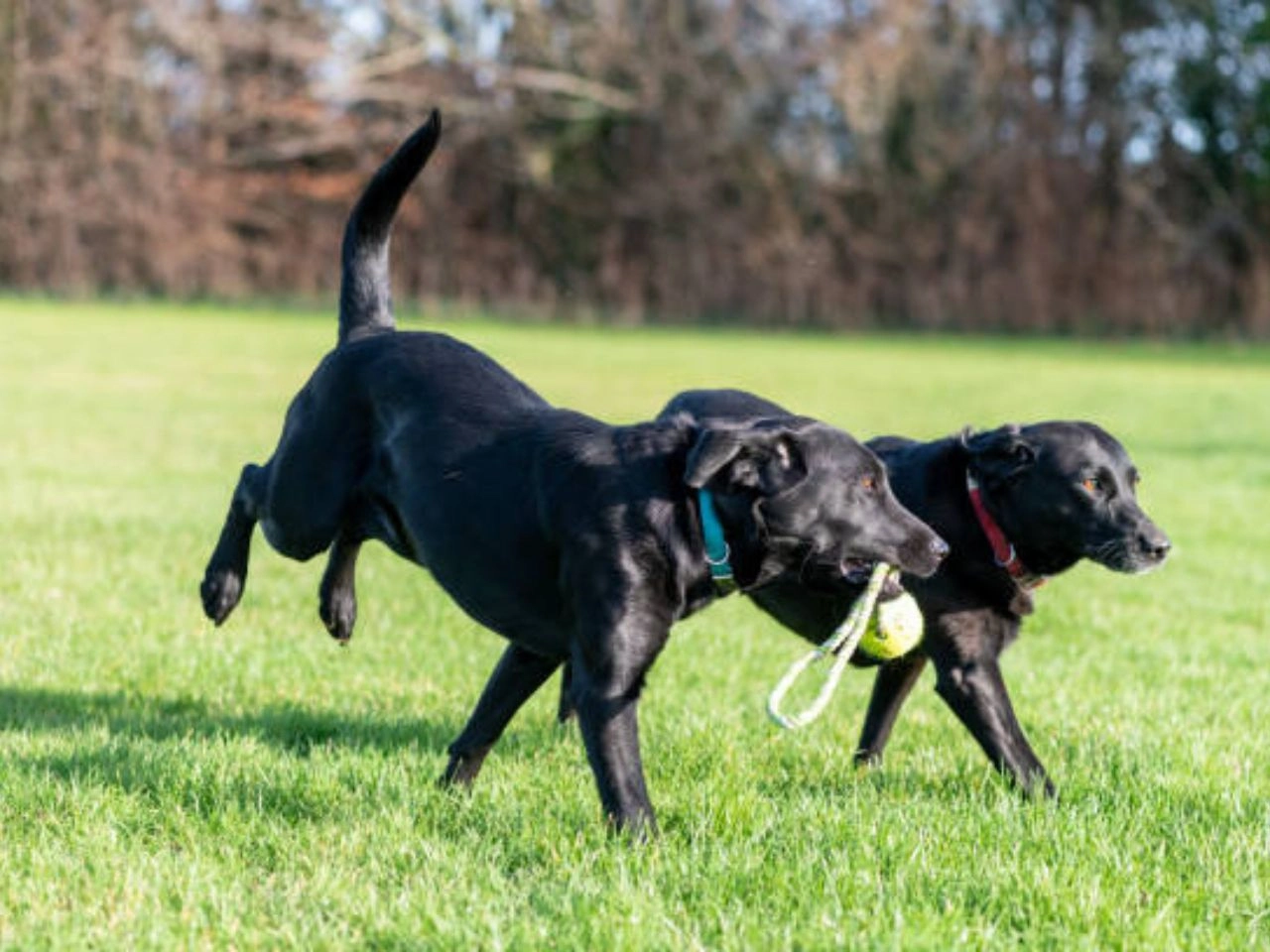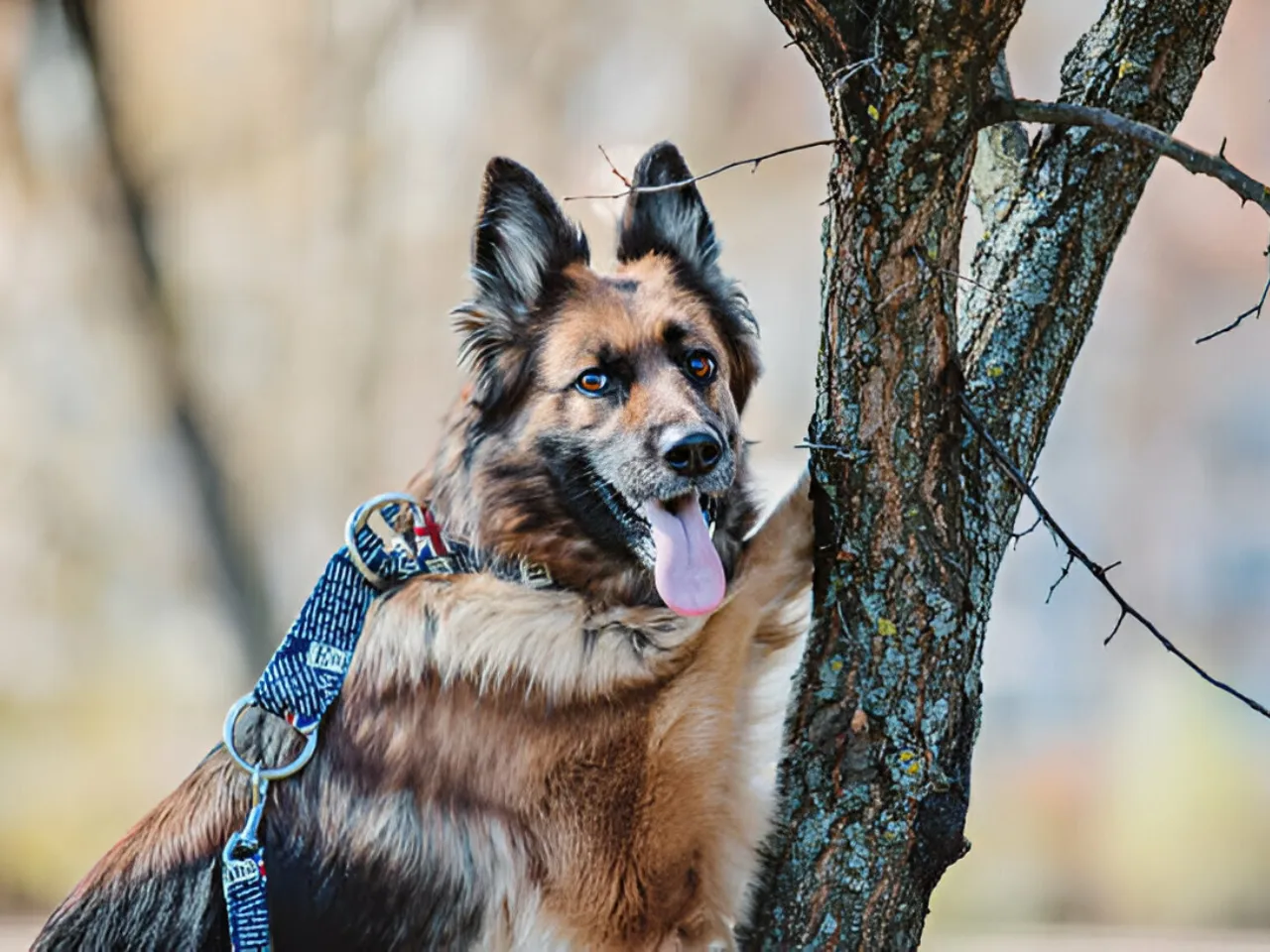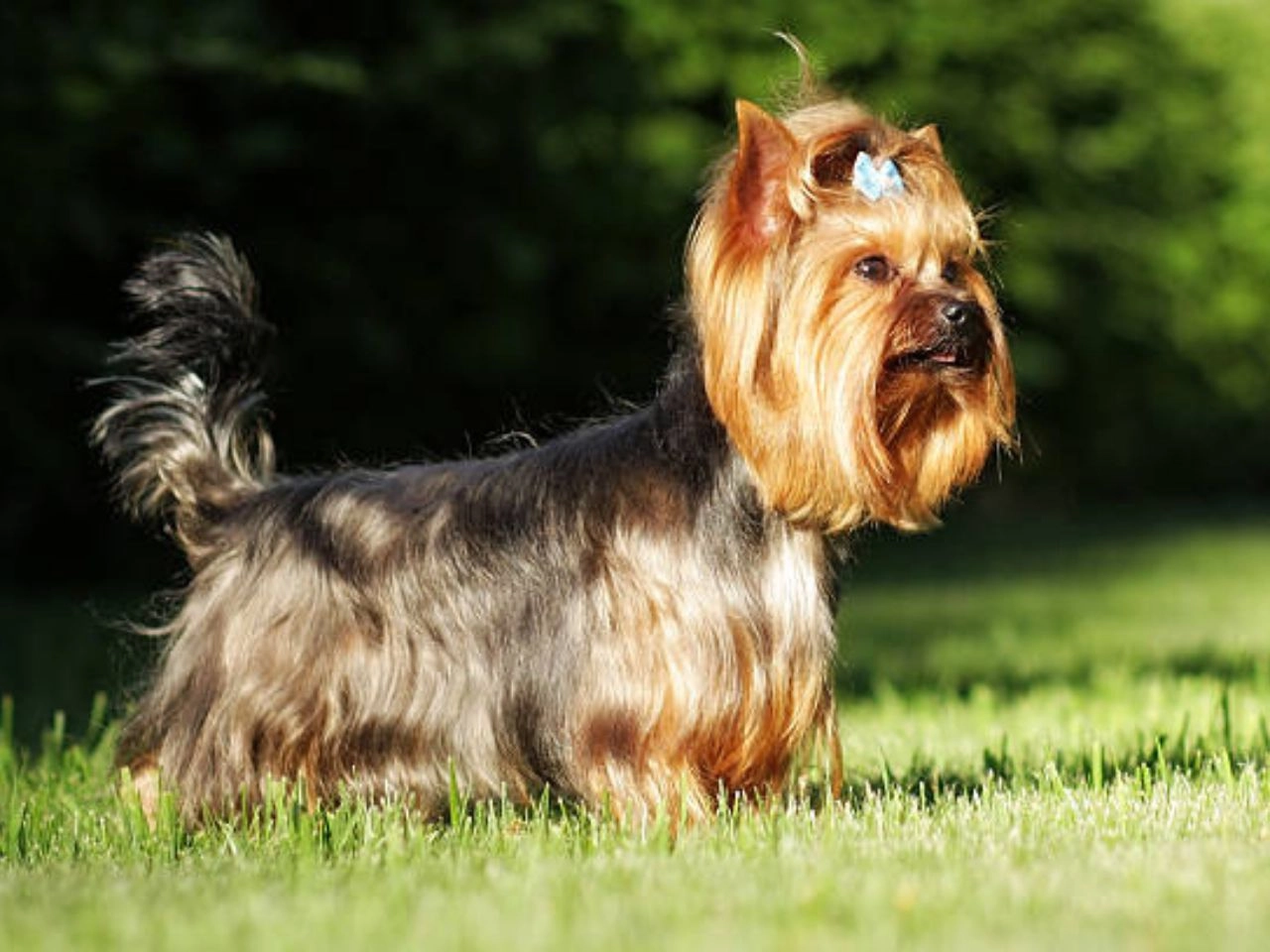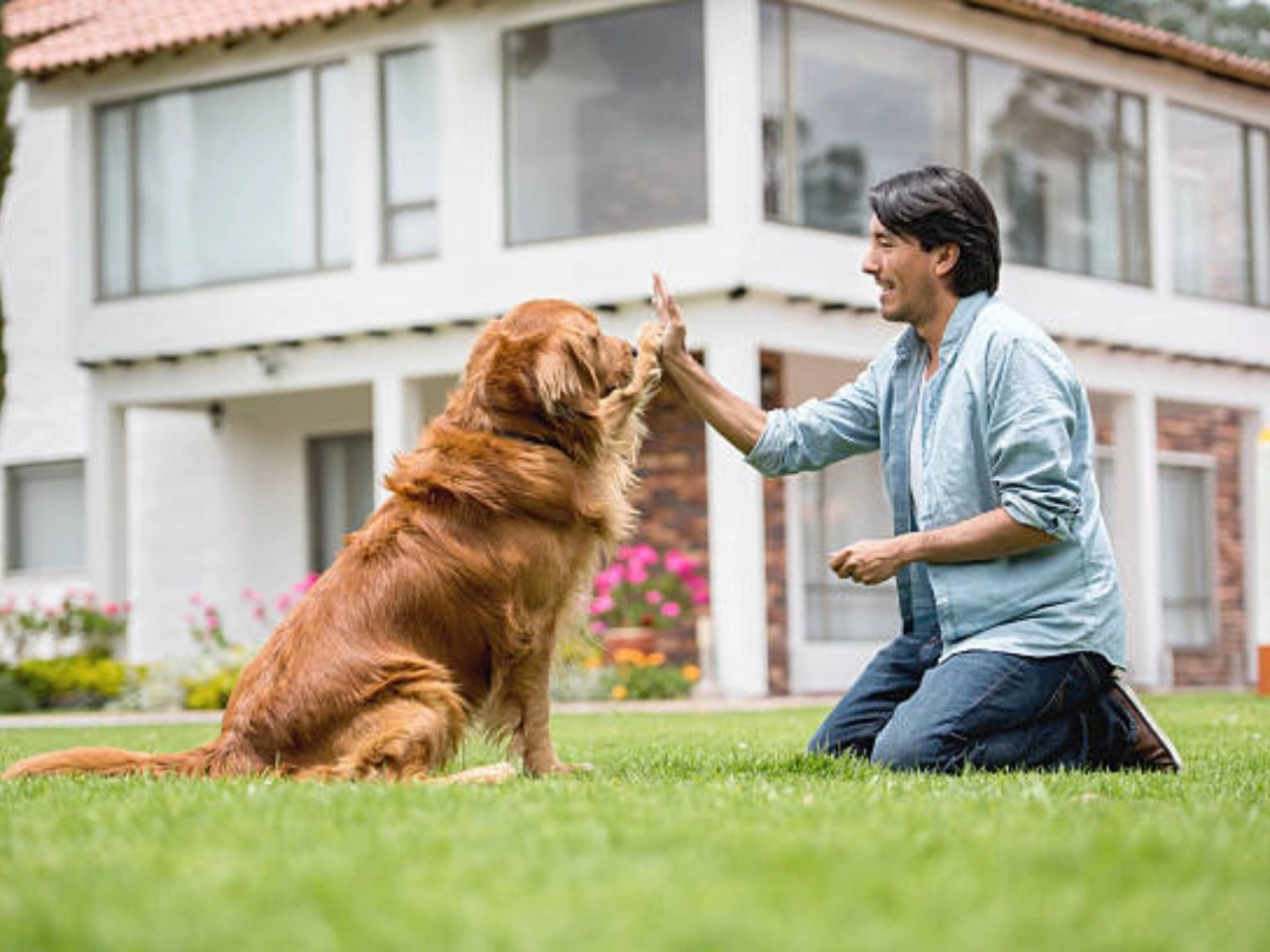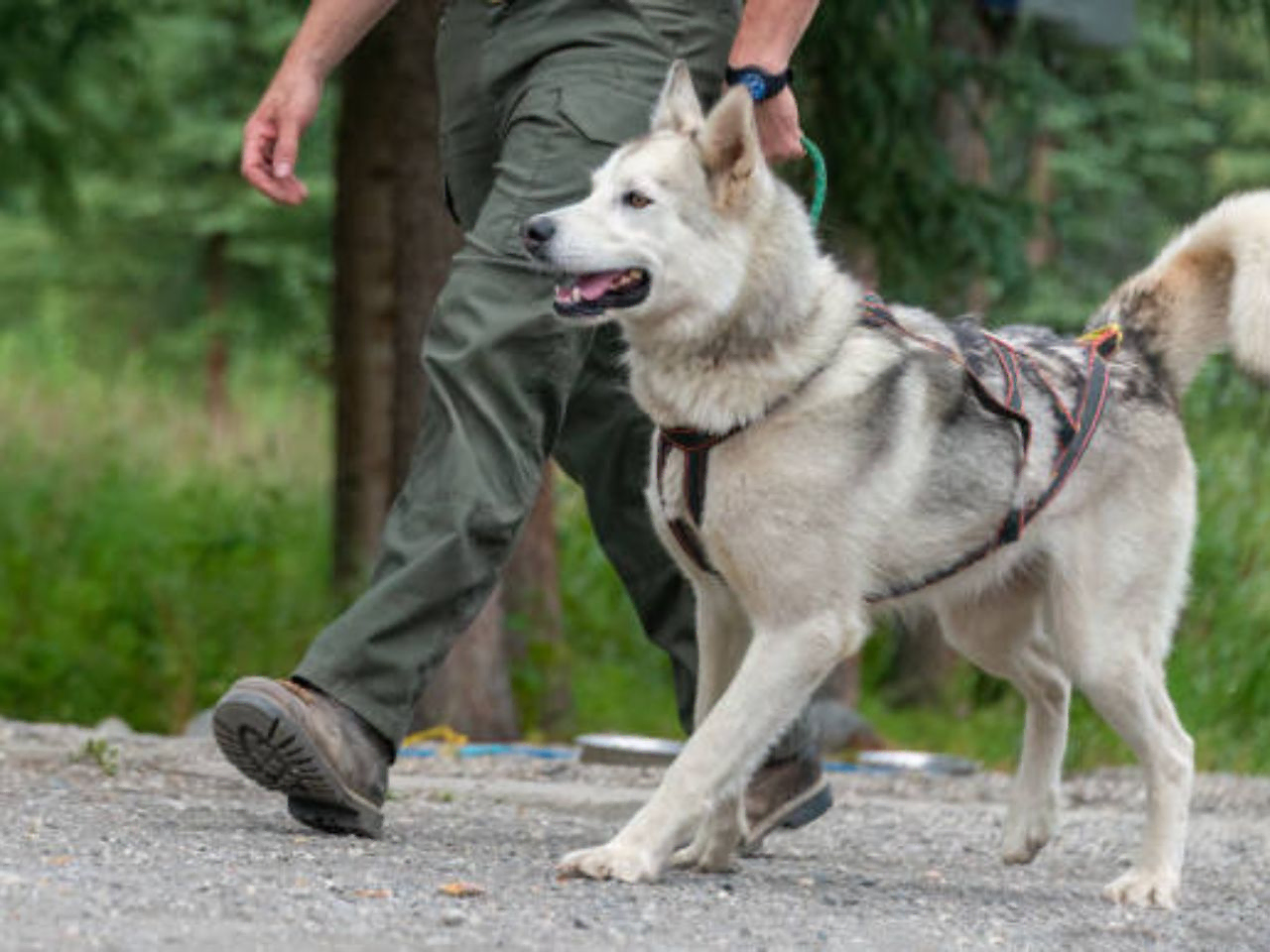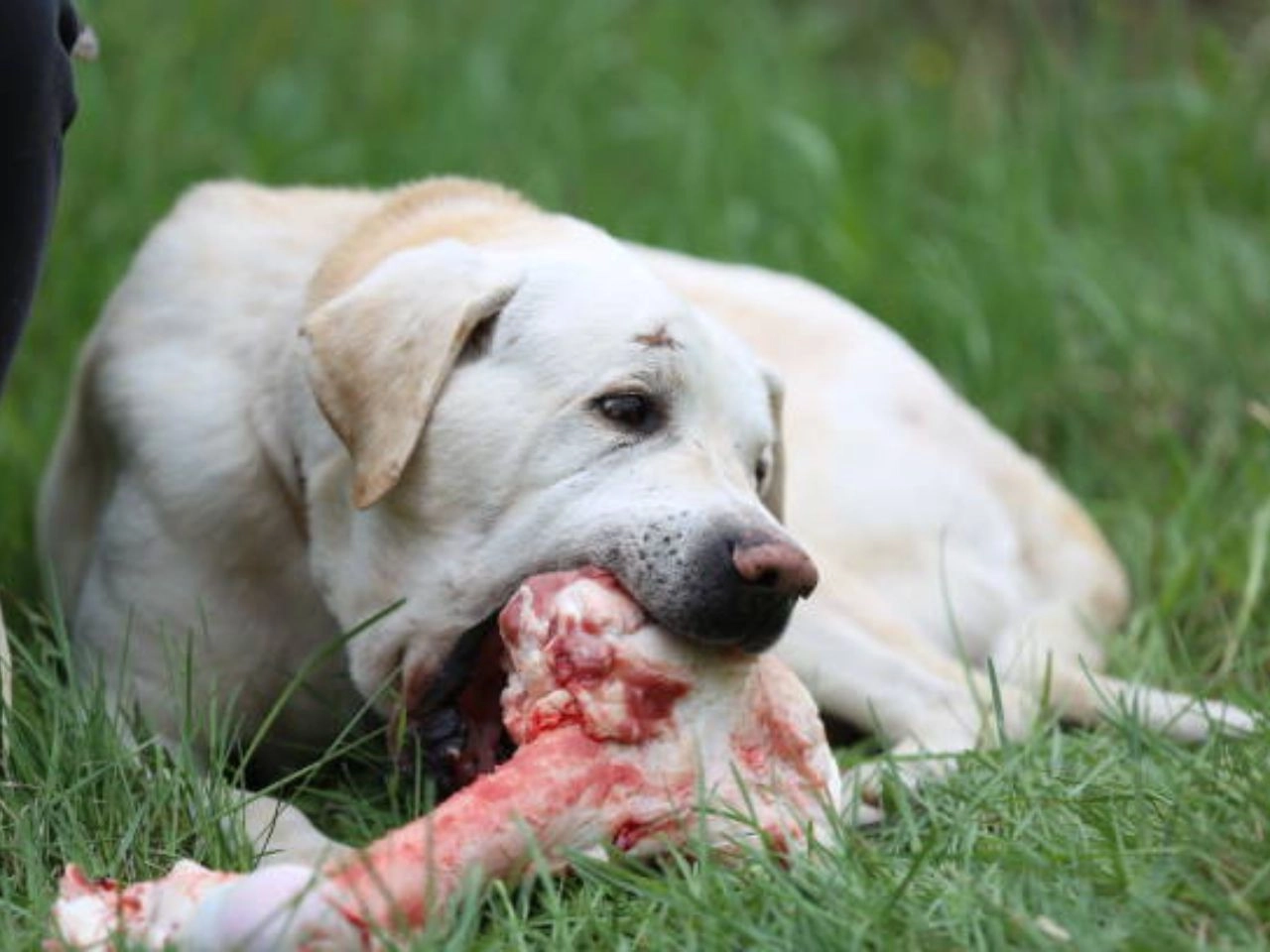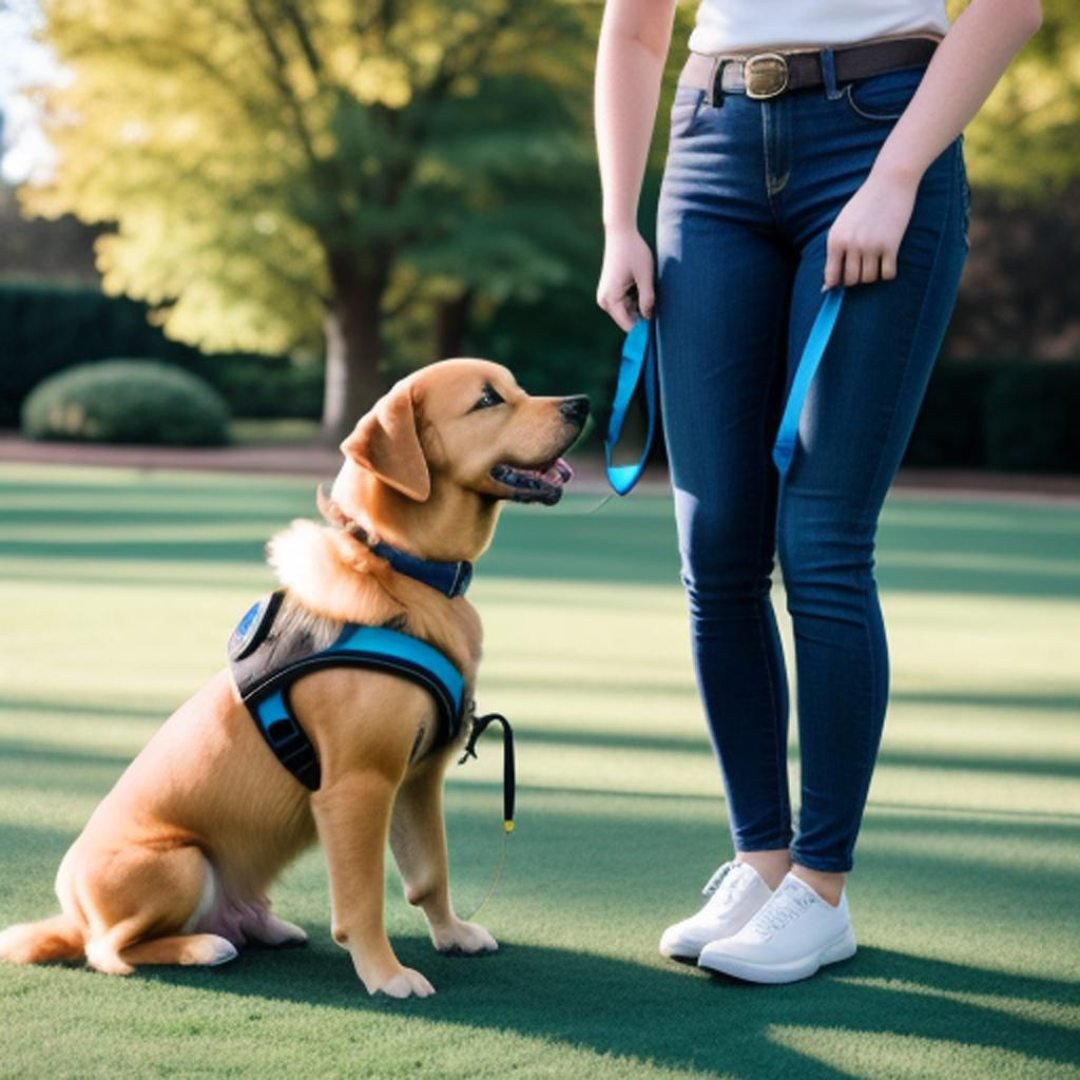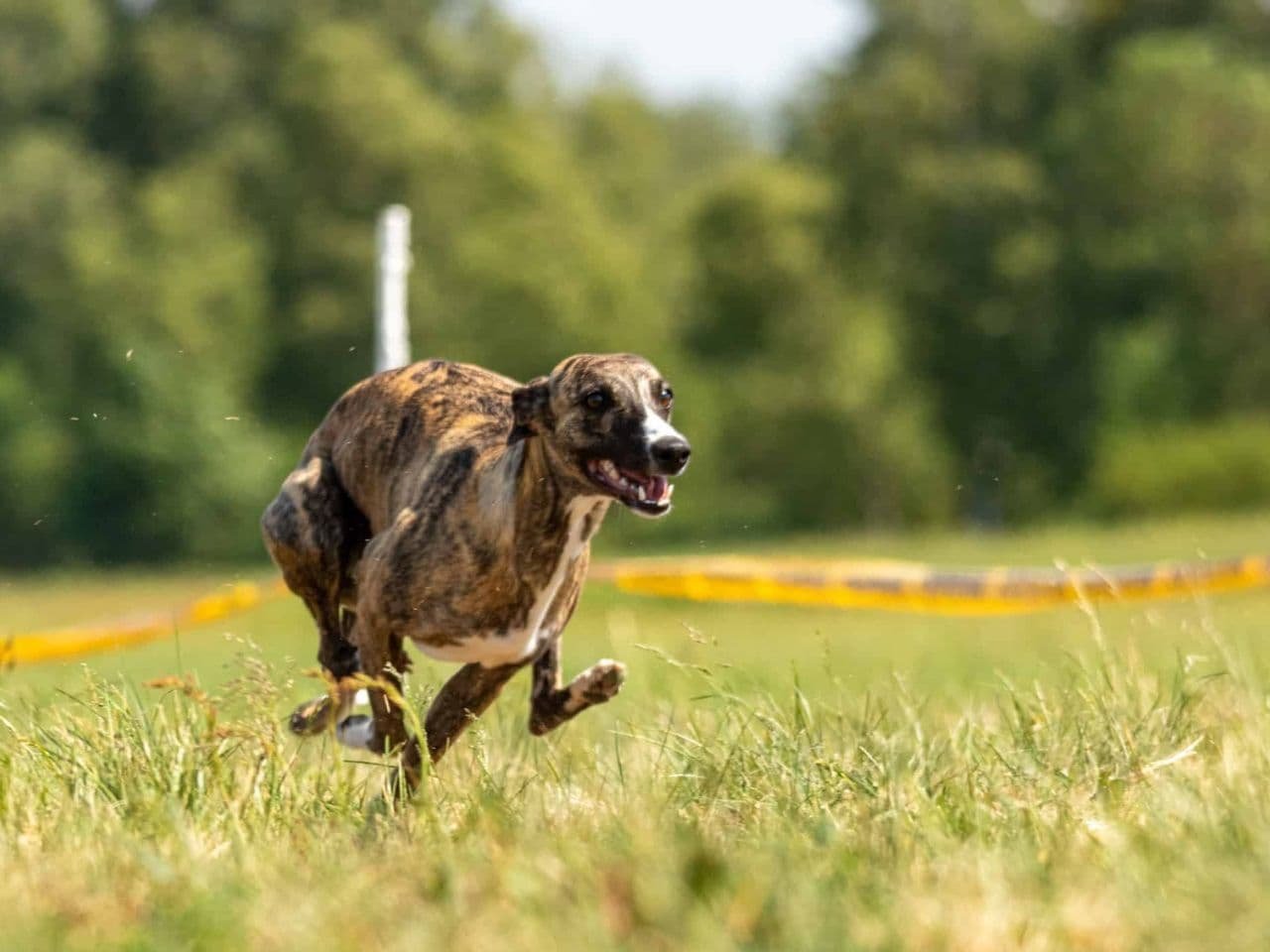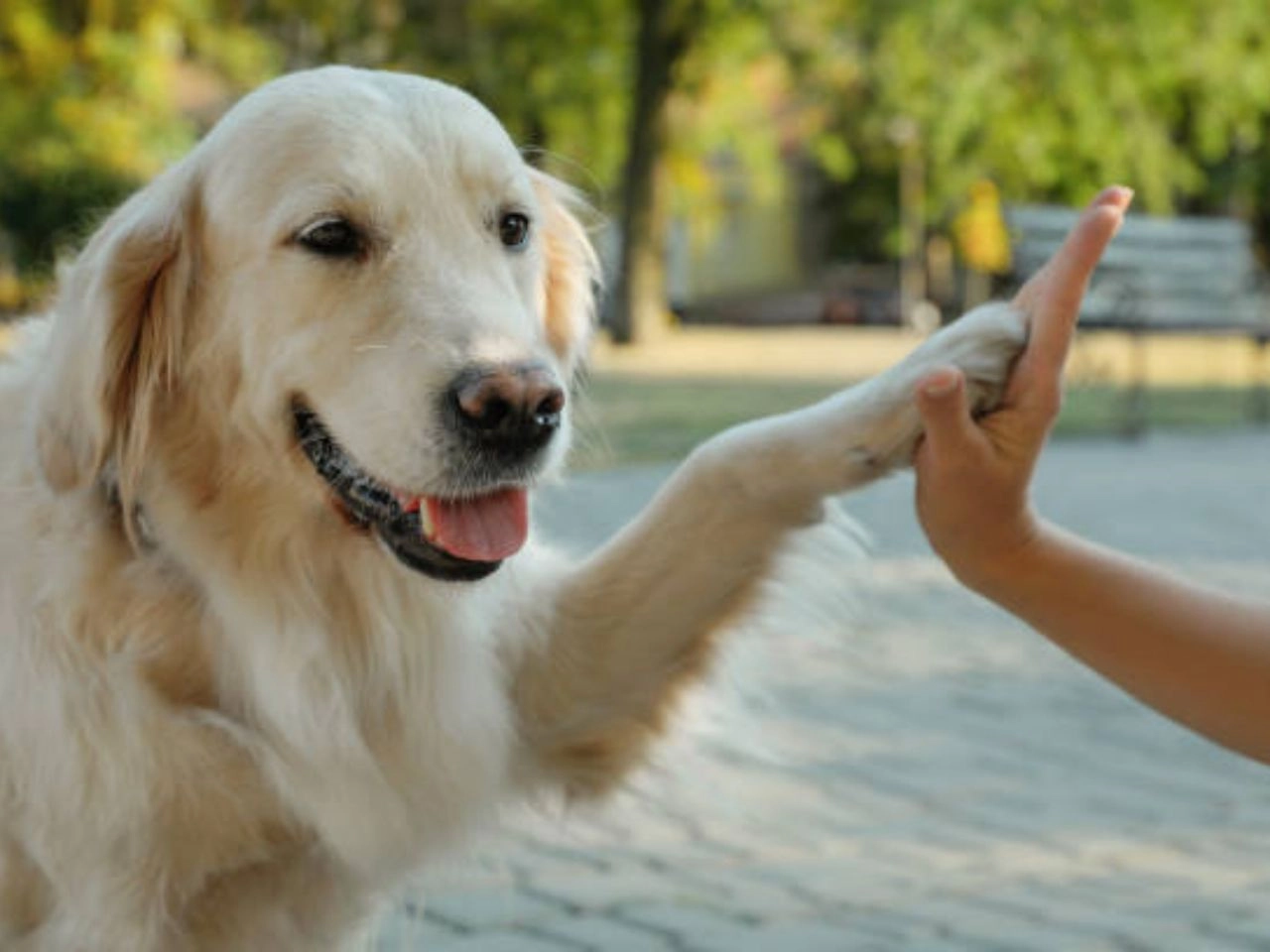To stop food aggression towards other dogs, consistently train your pet and seek professional help. Establish a calm and controlled feeding environment to address this behavior.
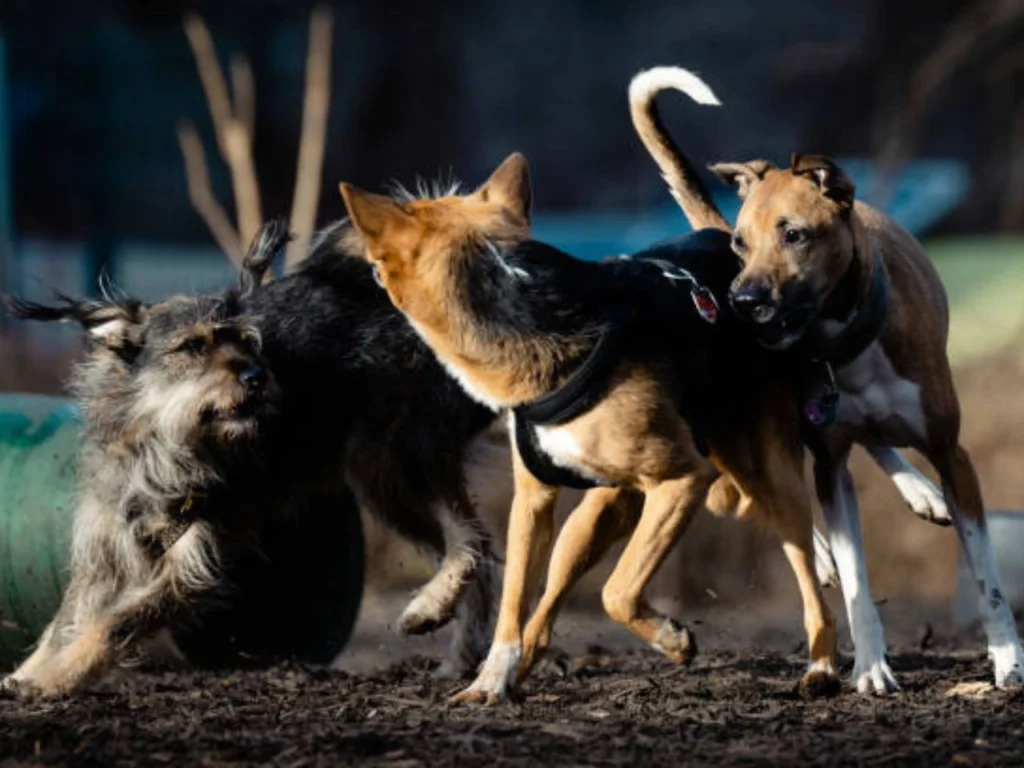
Managing food aggression in dogs is vital for maintaining a peaceful multi-pet household. This form of resource guarding can lead to serious altercations if not corrected. Begin by observing your dog’s body language during meal times to pinpoint triggers that might spark aggressive tendencies.
Training sessions should involve positive reinforcement, which rewards calm behavior around food. Seek the guidance of a certified dog trainer or behaviorist, as they can provide tailored strategies and support through the process. Feeding dogs separately and ensuring they have their own spaces can reduce competition and stress. Remember, patience and consistency are key elements in rectifying any form of aggression in canines.
The Alpha In The Pack: Recognizing Food Aggression
When dogs view themselves as the ‘Alpha’, food aggression can surface. Dominant behaviors near food suggest asserting status. Pets often display food aggression to guard resources. Understanding and managing this behavior is crucial for a peaceful, safe home. Identifying the warning signs is the first step.
Signs Of Food Aggression In Dogs
Here are some telltale signs that a dog might be exhibiting food aggression:
- They are growling or snapping when near their food.
- The body becomes stiff while eating.
- They glare or maintain eye contact.
- Ears pinned back or tail tucked up.
- Attempting to hide or hoard food.
Recognizing these signs allows pet owners to act promptly, easing tension and preventing possible dog fights.
Triggers For Food-related Hostility
Several factors may provoke a dog’s food aggression:
| Trigger | The introduction of new animals may lead to competition for food resources. |
| New Environment | Unfamiliar surroundings can stress dogs, heightening guarding behaviors. |
| New Pets | Introduction of new animals may lead to competition for food resources. |
| Past Neglect | Dogs with a history of insufficient food are more likely to be aggressive. |
| High-Value Treats | Guarding often occurs with treats that dogs view as particularly desirable. |
Decoding The Doggy Dilemma: Why Some Pups Guard Their Grub
Decoding the Doggy Dilemma: Why Some Pups Guard Their Grub whispers a tale as old as time about our furry friends. This behavior more than confuses pet owners. It often has them asking, “Why does my dog act like a food-guarding dragon?” To understand this, we dive into the instincts and learned behaviors that propel dogs to protect their precious kibble.
The Role Of Nature And Nurture
Nature gifts pups with the instincts to survive. By nature, dogs are opportunistic feeders. A full bowl is a prized possession. Thus begins the quest to keep it safe. The same instinct that helped their ancestors survive now sparks tugs of war in modern homes. But, nurture plays a part too. Past experiences, training, and socialization influence how dogs act around meals. Together, nature and nurture shape your dog’s food-guarding habits.
Understanding Pack Mentality And Resources
In the wild, dogs form packs. Packs have hierarchies. These hierarchies decide who eats first. It’s a way of life. In homes, this mentality persists. Dogs view family members as their pack. They may feel they need to compete for food. The drive to secure resources, like food and toys, is strong. It’s hardwired. Human families need to recognize this. Honoring a dog’s need for stability around food can help curb aggressive tendencies. Learn to read your dog’s signals. Predict when he might feel the need to guard his grub. With understanding, training to reduce food aggression becomes clearer.
Decoding the Doggy Dilemma: Why Some Pups Guard Their Grub whispers a tale as old as time about our furry friends. This behavior more than confuses pet owners. It often has them asking, “Why does my dog act like a food-guarding dragon?” To understand this, we dive into the instincts and learned behaviors that propel dogs to protect their precious kibble.
The Role Of Nature And Nurture
Nature gifts pups with the instincts to survive. By nature, dogs are opportunistic feeders. A full bowl is a prized possession. Thus begins the quest to keep it safe. The same instinct that helped their ancestors survive now sparks tugs of war in modern homes. But, nurture plays a part too. Past experiences, training, and socialization influence how dogs act around meals. Together, nature and nurture shape your dog’s food-guarding habits.
Understanding Pack Mentality And Resources
In the wild, dogs form packs. Packs have hierarchies. These hierarchies decide who eats first. It’s a way of life. In homes, this mentality persists. Dogs view family members as their pack. They may feel they need to compete for food. The drive to secure resources, like food and toys, is strong. It’s hardwired. Human families need to recognize this. Honoring a dog’s need for stability around food can help curb aggressive tendencies. Learn to read your dog’s signals. Predict when he might feel the need to guard his grub. With understanding, training to reduce food aggression becomes clearer.
Professional Insights: When To Seek Help
The ‘Professional Insights: When to Seek Help’ section delves into recognizing the need for expert guidance on food aggression in dogs. Food aggression can stem from various causes, some easily manageable and others more complex. A critical step is identifying when an issue surpasses the expertise of a dedicated pet owner and requires professional intervention.
Consulting A Veterinarian Or Behaviorist
Sudden changes in behavior warrant immediate attention.
Dogs showcasing aggressive tendencies around food might be dealing with underlying health problems only a veterinarian can identify. In addition, a certified behaviorist has the tools to tackle deep-rooted behavioral issues. Act fast if safety becomes a concern.
- Growling or snapping at other pets or humans.
- Evidence of physical altercations over food.
- Noticeable change in eating habits or overall demeanor.
The Benefit Of Professional Assessments
A thorough evaluation by a professional can uncover the root cause of food aggression. This knowledge paves the way for effective, personalized solutions. A skilled expert will:
- Review the dog’s history and environment.
- Observe the dog’s behavior in various scenarios.
- Develop a tailored management or training plan.
A professional perspective can provide peace of mind, ensuring the safety of all individuals and pets involved. It can also boost the likelihood of a positive outcome. Thus, it’s vital to recognize when to step back and seek help for the best interest of your furry friend.
Safe Interventions: Preventing Fights Over Food
Safe Interventions: Preventing Fights Over Food is a critical topic for dog owners. Dogs can be possessive over food, leading to aggression. This behavior can cause serious injuries to dogs and stress to owners. Let’s explore effective ways to prevent these food-related confrontations.
Creating Secure Eating Environments
Dogs need a place where they feel safe to eat. To create this:
- Separate each dog during meal times
- Use barriers such as baby gates or crates
- Ensure all dogs have their bowls
The Importance Of Supervised Feeding Times
Watching your dogs eat is key. Here’s why:
- Prevents sneaky food stealing
- Maintains order during meals
- Allows you to act quickly if a scuffle breaks out
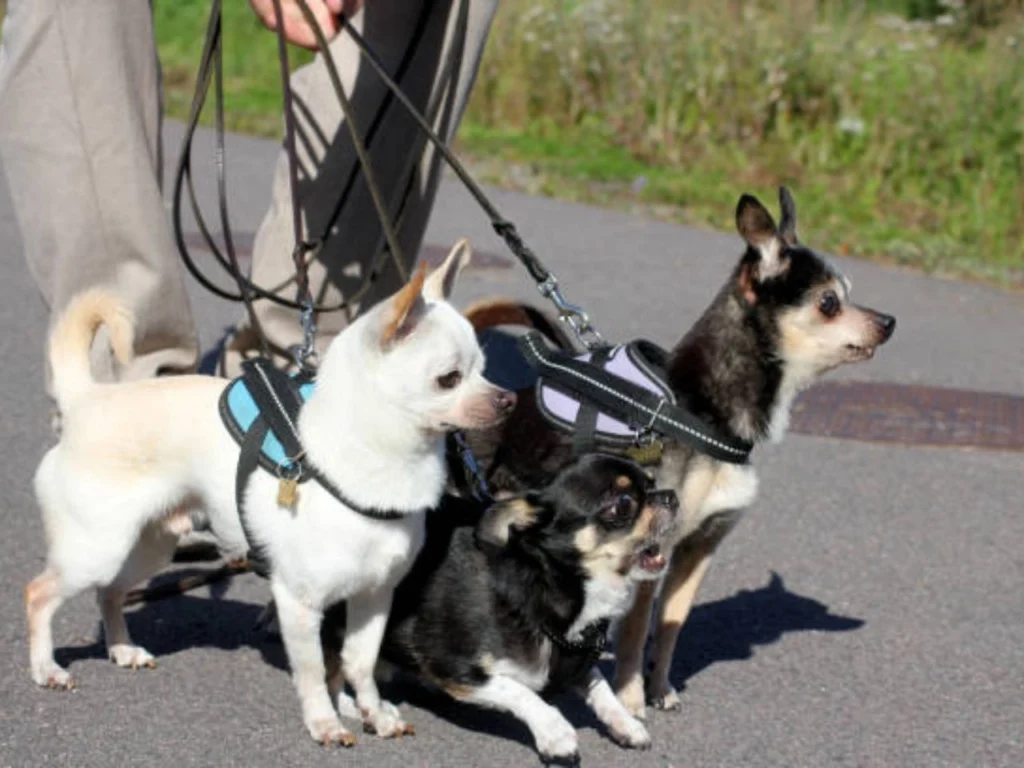
Behavior Modification Techniques of Stop Food Aggression Towards Other Dogs
Are you dealing with a pup who’s not too keen on sharing his snacks with other fur friends? Food aggression amongst dogs can turn mealtime into a stressful event. Worry not! Effective behavior modification techniques can help tame the growls and snarls.
Behavior Modification Techniques involve training your dog to behave differently around food and other dogs. These methods are time-tested and approved by dog behaviorists worldwide. Start with patience and consistency, and soon you’ll see positive changes in your canine companion’s demeanor.
Desensitization Methods Desensitization Methods of Stop Food Aggression Towards Other Dogs
Desensitization is a slow but sure process. It’s all about gradually introducing your dog to the idea that other dogs near their food is no big deal. Here’s how to make this magic happen:
- Start Slow: Bring another dog into the room but keep a safe distance from your dog’s food bowl.
- Gradually Close In: Over time, slowly decrease the distance between the dogs during meal times.
- Stay Calm: Keep the atmosphere peaceful. Anxiety can make aggression worse.
Counter-conditioning Strategies
Next move? Counter-Conditioning. This means changing your dog’s emotional response to a situation. Time to swap out the ‘grumble and snap’ for some ‘calm and happy’ vibes.
- Associate Positives: When other dogs are near, offer your pup something they adore, like a favorite treat or toy.
- Reward Good Behavior: Anytime your dog remains calm around others, it’s treat time!
- Repeat Consistently: Regular practice shapes behavior. Keep up with the training daily.
Training Tips For A Peaceful Pack of Stop Food Aggression Towards Other Dogs
Dogs are pack animals by nature, and a peaceful pack is the goal for any dog owner. Yet, food aggression towards other dogs can disrupt harmony and cause stress. Tackling this behavior requires persistence and the right strategies. Below, find effective training tips to encourage a serene environment during meal times.
Impulse Control Through Obedience Training
Impulse control is vital in managing food aggression. Obedience training is the first step towards achieving this.
- Start with basic commands like ‘sit’ and ‘stay’.
- Use positive reinforcement; reward your dog for obeying.
- Practice ‘leaving it’ with treats to build self-control.
Consistent practice boosts impulse management. It makes your dog wait for your cue before eating. Remember, short sessions work best. Aim for 5-10 minutes daily.
Establishing Clear Communication And Commands
Clear communication bridges the gap between confusion and comprehension. It’s critical for preventing food aggression among dogs.
- Always use a calm and firm voice.
- Choose specific words for mealtime behaviors, like ‘eat’ or ‘all done’.
- Be consistent with commands to avoid mixed signals.
This training enforces rules around food. Dogs learn what is expected and respect set boundaries. In return, anxiety decreases, promoting peace during meals.
Remember, patience and positive reinforcement shape good behavior. Address food aggression early, and enjoy the company of your peaceful pack.
Feed-time Tactics: Separation And Structure
Dealing with food aggression in dogs requires smart feeding strategies. Correct mealtime behavior is crucial for a peaceful home, especially if you own multiple pets. This post will delve into effective ‘Feed-Time Tactics: Separation and Structure’ to curb this undesirable behavior.
Strategic Feeding Schedules For Multiple Dogs
To minimize tension among dogs during feeding times, adopting strategic feeding schedules is key.
- Feed simultaneously: Offer meals to all dogs at the same time but in different areas to prevent competition.
- Stick to a routine: Consistent meal times help dogs know what to expect, reducing anxiety.
- Delayed feeding: For dogs with higher aggression levels, feed them last to reinforce calm behavior.
The Utility Of Physical Barriers During Mealtime
Using physical barriers during mealtime provides a personal space for each dog, which can prevent fights.
| Type of Barrier | Benefits |
| Baby gates | Easy to set up and move |
| Crates | Personal, enclosed space |
| Separate rooms | No visual triggers |
Effective use of barriers can greatly reduce food aggression and teach dogs that they can eat peacefully without the threat of losing their meal to a companion.
Dietary Considerations And Food Aggression of Stop Food Aggression Towards Other Dogs
Food aggression in dogs can be a stressful challenge for pet owners. Understanding the link between what dogs eat and how they behave is crucial. Quality food and proper amounts can impact a dog’s disposition. Let’s delve into dietary considerations to prevent food aggression towards other dogs.
Assessing Food Quality And Quantity
The right food keeps a dog healthy and happy. But what if the food is making a dog aggressive? Checking what goes into the bowl is the first step toward change. A diet change might be what’s needed.
Dogs need the right amount of food. Too little can lead to hunger and aggression. Too much can cause discomfort and possessive behavior.
Consider dog food labels carefully. Quality ingredients lead to better health. Healthier dogs are often calmer and less aggressive.
Portion sizes matter. Dogs need balanced portions at regular times. This helps avoid hunger-driven aggression.
Impact Of A Balanced Diet On Behavior
Diet affects a dog’s behavior significantly. The right nutrients and vitamins can make all the difference. A balanced diet encourages a stable temperament.
- Protein – Builds muscle and supports brain function. Leads to better impulse control.
- Fats – Source of energy. Keeps dogs satisfied and prevents snappy behavior.
- Carbohydrates – Deliver energy over time. Helps avoid spikes in blood sugar and mood.
- Vitamins and minerals – Ensure overall health. A fit dog is a happy, less aggressive dog.
Well-balanced meals can reduce anxiety and stress. These emotions often lead to food aggression.
Consult a veterinarian or a dog nutritionist. They offer advice on meal plans that can alter behavior. They help tailor diets to individual dog needs.
Positive Reinforcement: Rewards Beyond Food
Teaching a dog to stop food aggression involves more than treats. Offering different types of rewards can strengthen your dog’s good behavior without creating a dependency on food. Toys and attention can effectively reinforce positive behavior, especially when managing food aggression toward other dogs. Counteracting food aggression requires consistent training where a dog learns that calm behavior around others leads to enjoyable outcomes.
Utilizing Toys And Attention As Incentives
Toys are a powerful incentive for many dogs. Identifying your dog’s favorite toy can turn it into a potent reward during training sessions. Use this toy exclusively as a prize for peaceful behavior around other dogs. This association encourages your canine friend to repeat these positive actions.
- Identify a toy that your dog loves
- Use the toy to redirect attention from food around other dogs
- Only allow access to this toy during training for maximum impact
Attention from you can be just as rewarding as any treat or toy. Simple praises or patting works as a motivator for your dog to behave well. A happy tone and a gentle touch reinforce that they are doing the right thing without needing a snack.
- Offer praises in a cheerful voice during training
- Pat or rub your dog when they show calm behavior
- Combine voice and touch rewards for a stronger effect
Avoiding Negative Reinforcement Pitfalls
It’s crucial to avoid mistakes that could undo your hard work. Negative reinforcement, like scolding or pulling away, might stop your dog temporarily, but it doesn’t teach the right lessons. Scaring or hurting your dog can lead to fear and confusion, harming your relationship and their progress.
- Never yell or physically punish your dog for aggression
- Avoid yanking collars or leashes during training
- Stay calm and consistent, even when challenges arise
Switch to positive methods and stay patient. Replacing a negative approach with positive reinforcement builds trust and leads to lasting change. Your dog will learn that gentle behavior is always the way to go, and their aggression towards other dogs will decrease over time.
Socialization And Its Role In Mitigating Aggression
Socialization plays a crucial role in reducing food aggression in dogs towards their counterparts. It’s a process that helps your furry friend understand how to interact with other dogs. Socialization teaches them appropriate behavior and reduces fear and anxiety around their peers, which often leads to aggression. Let’s explore how socialization can become a game-changer in mitigating aggressive tendencies.
The Importance Of Early Social Exposure
A puppy’s brain is exceptionally receptive in their early months. Early social exposure can shape their future reactions to various situations. Introducing your puppy to a variety of dogs in a safe environment encourages positive encounters. Remember:
- Start socialization as early as seven weeks old.
- Keep experiences positive to foster good behavior.
- Vary the types and sizes of dogs they meet.
A well-socialized dog often shows less aggression over food and toys.
Maintaining Controlled Interaction With Other Dogs
Consistent, controlled interactions with other dogs build your pet’s confidence. Steps include:
- Engage in monitored playdates.
- Choose calm, non-aggressive dogs for interactions.
- Interrupt play if signs of aggression appear.
- Use rewards for calm, polite behavior around food.
Scheduled playtimes and controlled meetings increase social skills and reduce the chances of food aggression. Always supervise interactions to ensure they remain calm and positive
Tracking Progress: Monitoring Behavioral Changes
Training your dog to overcome food aggression is a journey full of twists and turns. Like any journey, tracking progress is crucial to success. A structured approach to monitoring your dog’s behavior not only keeps you motivated but also provides invaluable insights into what works and what doesn’t. Keep reading to discover how to systematically chart your furry friend’s path towards calmer, more sociable mealtimes.
Keeping A Behavior Diary
Maintaining a behavior diary is a powerful tool in your dog’s behavior toolkit. Here’s how to do it effectively:
- Record daily: Note each instance of food aggression, no matter how minor.
- Note triggers: Write down what caused the behavior, such as a person or another animal near their food.
- Describe the behavior: Detail the aggression shown, from growling to snapping.
- Track intervention outcomes: Reflect on the effectiveness of your response to their behavior.
Recognizing Milestones And Setbacks
Celebrating the small wins and recognizing the inevitable backslides helps in staying the course:
- Mark improvements: Cheer on days with reduced aggression or successful calm eating.
- Identify patterns: Look for trends like better behavior on certain days or in specific situations.
- Acknowledge rough days: Don’t be discouraged by setbacks; use them as learning opportunities.
- Adjust strategies: Tailor your approach based on what you learn from the diary entries.
By keeping a disciplined record and understanding the journey’s ups and downs, you empower yourself and your dog to overcome food aggression. Regular monitoring can turn a long, winding road into a clear path to behavioral change.
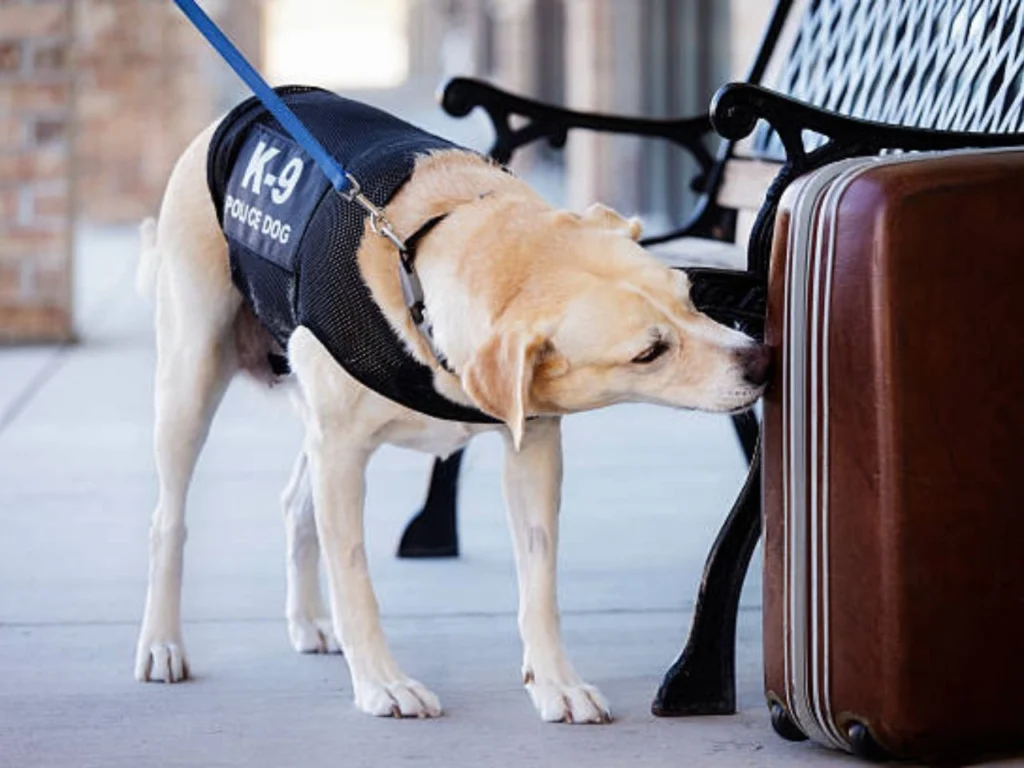
Case Studies: Success Stories In Overcoming Food Aggression
Dog owners around the world have tackled the challenge of food aggression.
Learning From Other Owners’ Experiences
Real-life examples shine a light on practical solutions.
- Bella: A terrier mix learned to trust her human during mealtime.
- Max: Training and slow feeder bowls helped this pup eat calmly.
- Luna: Her aggression lessened with a strict eating schedule.
Analysis Of Effective Interventions
Key interventions have proven successful in many case studies.
| Method | Success Rate |
| Behavioral Training | High |
| Feeding in Separate Spaces | Medium to High |
| Desensitization Exercises | Medium |
Consistent practice leads to lasting change.
Maintaining Harmony: Long-term Strategies For Dog Households
Living with more than one dog can be a joyful experience. It’s important to ensure peace and harmony between your furry friends. Dogs may show food aggression towards each other. This can disrupt the household. Long-term strategies help maintain a calm environment. These strategies improve relationships between your dogs.
Routine Re-evaluation And Consistency
As dogs grow and change, so do their behaviors. Regular check-ins are essential. This ensures routines still work for all your dogs. Feeding schedules, playtime, and resting areas might need adjustments. Keep rules consistent to prevent confusion and conflicts. Here are ways to keep your dogs’ routine in check:
- Assess feeding times: Make sure dogs have space during meals.
- Monitor interactions: Note any changes in behavior.
- Update sleeping arrangements: Give each dog a safe, comfortable spot to rest.
Promoting Ongoing Peaceful Coexistence
Creating a stress-free home for multiple dogs involves daily effort. Encourage positive interactions.
- Separate resources: Each dog should have its own food, toys, and bed.
- Train together: Joint training sessions strengthen bonds and teach manners.
- Reward good behavior: Treats and praises help reinforce peaceful conduct.
Routine and consistent rules are the keys to harmony. Watch for signs of tension. Address issues early to prevent food aggression.
FAQ Of How To Stop Food Aggression Towards Other Dogs
Why Is My Dog Suddenly Food Aggressive Towards Other Dogs?
Your dog may display sudden food aggression due to competition, fear of food scarcity, past negative experiences, or underlying medical issues. Seek guidance from a vet or a canine behaviorist to address the issue.
Can Dogs Be Trained Out Of Food Aggression?
Yes, dogs can be trained to overcome food aggression. Consistent training, positive reinforcement, and professional guidance are effective strategies for addressing this behavior.
How Do I Stop My Dog From Attacking Each Other Over Food?
Feed your dogs separately to prevent competition over food. Establish a consistent routine and designated eating areas. Offer meals at the same time to avoid unrest. Consistently reinforce positive behavior with rewards. Seek professional training if aggression persists.
Can Food Aggression In Dogs Be Cured?
Yes, food aggression in dogs can be managed and oftentimes effectively resolved. It typically involves consistent training, behavior modification techniques, and sometimes professional help from a dog trainer or behaviorist.
Tackling food aggression in dogs not only fosters a peaceful environment but also reinforces your role as a pack leader. Early intervention is key. Always consult a professional if challenges persist. Remember, consistency and positive reinforcement go a long way in curbing unwanted behaviors.
Keep your furry friends safe and content by being vigilant and proactive in your training approach.
